

The LGBTQ community is composed of individuals who have a different sexual orientation or gender identity than most of the population. While many people who identify as LGBTQ experience mental health issues, identifying as LGBTQ is not a mental illness itself. 1
Within the LGBTQ community, those who are bisexual and transgender have the highest rates of mental health issues, and LGBTQ youth experience the most mental health issues compared to the rest of the age groups in the community. 1
Members of the LGBTQ community are more likely to have mental health issues because they are at high risk for experiencing shame, discrimination, and adverse and traumatic events. There are several negative stereotypes associated with identifying as LGBTQ community, which can cause members to feel uncomfortable being honest about their identity. Hiding their true identity can increase feelings of loneliness. 1
Fortunately, many people within the LGBTQ community have supportive friends, families, and communities that help them walk through adverse experiences and remain resilient. LGBTQ individuals also use mental health services 2.5 times more than individuals who do not identify as LGBTQ. 1
There are plenty of risk factors that go into the mental health issues in the LGBTQ in youth today.
There have been positive changes in the social attitude towards the LGBTQ community. This shift has led to an increase in the number of LGBTQ youth who “come out” or share their sexual orientation or gender identity. Coming out at a young age can impact social and relational experiences and negatively affect mental health, especially when these young people do not have a healthy support system. 2
Coming out as a member of the LGBTQ community can sometimes be a difficult or traumatic experience. Coming out is especially challenging if it is met with rejection from a close friend, family member, coworker, or fellow member of a religious community. In 2019, 86% of LGBTQ youth were harassed or assaulted at school, which significantly impacted their mental health. 2
LGBTQ youth in the LGBTQ community have a higher risk of experiencing violence compared to other young people. Violence includes behaviors such as bullying, teasing, harassment, and physical assault. In 2015, a survey found the following regarding LGBTQ students: 3
Members of the LGBTQ community may experience homophobia, biphobia, transphobia, bullying, and other forms of identity-based shame. This community is one of the most targeted communities by those who engage in hate crimes in the United States. The harassment and discrimination they face are often traumatizing. 2
Other forms of discrimination that the LGBTQ community experiences include labeling, stereotyping, denial of opportunities, and verbal, mental, and physical abuse. This discrimination can lead to a significantly heightened risk of PTSD in the LGBTQ community. 2
Mental health treatment for LGBTQ individuals often groups together all individuals within the community. This approach can create a lack of proper mental health care, as each sub-community has its own set of experiences, challenges, and rates of mental illness. 2
Within the LGBTQ community, various individuals experience separate and overlapping mental health challenges. Other aspects of an individual’s identity, like race or economic status, can also affect their mental health status and their ability to access treatment. 2
Within the mental health field, people who identify as LGBTQ may face discrimination, harassment, or a lack of cultural knowledge from potential health care providers. This type of treatment can cause LGBTQ individuals to hide their sexual orientation or gender identity when seeking help, making it even more challenging for them to receive proper care. 2
Young people in the LGBTQ community experience mental health issues at a higher rate than other young people and are also more likely to experience abuse.
Schools can sometimes provide unsafe learning environments for LGBTQ youth. They may expose these young individuals to discriminatory behaviors and practices. LGBTQ youth might experience several mental health issues as a result of this discrimination and other risk factors. Some of these mental health issues include anxiety and depression, stress, low self-esteem, disordered eating, substance abuse, and even suicide. 4
Young members of the LGBTQ community experience higher rates of anxiety and depression than their heterosexual and cisgender peers. As of 2020, LGBTQ youth are 1.75 times more likely to experience anxiety and depression than their peers, and trans and nonbinary youth are 2.4 times more likely to experience anxiety and depression. 4
Additionally, while the COVID-19 pandemic has been challenging for all individuals, it may have been particularly challenging for self-identified LGBTQ youth. Lockdown procedures caused many young members to experience increased exposure to stigma, especially when quarantining with unsupportive family members, which caused even greater anxiety. 4
One-third of LGBTQ youth reported that they could not be themselves at home, and 16% said that they felt unsafe at home. Additionally, 25% of LGBTQ reported that they did not have access to proper mental health care during the pandemic. 4
LGBTQ youth encounter similar stressors compared to other young people, including going through puberty, fitting in at school, conflicts at home, school work, and planning for the future. Unfortunately, young LGBTQ members also experience rejection and discrimination based on their identity. 4
Because of this additional, impactful stressor, stress rates among LGBTQ youth are much higher than other young individuals. A 2018 survey found that 98% of the LGBTQ respondents experienced trouble sleeping, 77% had felt depressed in the past week, and only 26% said they felt safe at their schools. 4
The self-esteem of young LGBTQ members can be significantly affected by potential discrimination, rejection from family members, and fear of being treated differently. In 2018, 91% of LGBTQ youth said they felt pride in their identity, and still, 70% felt worthless or hopeless in the past week. 4
Among LGBTQ youth, 67% reported that they had heard family members make negative statements about the LGBTQ community. LGBTQ youth of color had the highest feelings of rejection, and only 11% of this group said that their racial or ethnic group was viewed positively by others. 4
LGBTQ youth may be more likely to develop eating disorders to cope with the emotional pain they feel as a result of discrimination. Eating disorders can also develop out of a necessity to gain control when life feels out of control like it might for a young member of the LGBTQ community. 4
In 2020, 54% of LGBTQ individuals reported that they were diagnosed with at least one eating disorder at some point in their life. Additionally, in 2020, 21% of the LGBTQ community suspected they might have an active eating disorder. 4
Young individuals in the LGBTQ community might also be more likely than their peers to use substances as a coping mechanism. According to multiple studies, young lesbian, gay, and bisexual individuals use tobacco, alcohol, and illicit drugs at higher rates than their heterosexual counterparts. Additionally, lesbian and bisexual girls are 9.7 times more likely to smoke cigarettes than heterosexual girls, and 25% of gay boys are regular binge drinkers. 5
Any family rejection that LGBTQ youth might face can also affect their use of illegal substances. According to a study, young people who experience a moderate level of family rejection are 1.5 times more likely to use illicit substances than those who experience little or no rejection. Youth who experience high levels of family rejection are 3.5 times more likely to use these substances. 5
Young transgender individuals are at high risk of developing issues with substance dependency. Transgender people use certain drugs like methamphetamine, injectable drugs, and tobacco at higher rates than other individuals. 5
Unfortunately, transgender youth may experience more barriers to accessing behavioral health care than the rest of the LGBTQ community. These barriers include physical and verbal abuse from other clients and staff, clothing requirements based on biological sex instead of their identified gender, and sleep requirements with other individuals based on biological sex. 5
Suicide rates have continued to rise for most groups over the years, and LGBTQ youth have continued to have higher rates of suicidal thoughts and actions than cisgender, straight youth. 4 LGBTQ youth are two times as likely to have suicidal thoughts than their peers. Additionally, suicide is the third leading cause of death among youth ages 15 to 24, and LGBTQ youth are more likely than their peers to attempt suicide. 5
In the past year, more than half of transgender and non-binary youth considered suicide. 6 In 2016, young people who identified as gay, lesbian, and bisexual considered suicide at three times the rate of their heterosexual counterparts. In 2019, 39% of the LGBTQ youth community had seriously considered suicide in the prior year, and 71% felt sad or hopeless. 4 Additionally, LGBTQ high school students engage in suicide attempts at a rate that is two to seven times higher than the rate at which heterosexual high schoolers do. 5
A 2009 survey found that of the students who seriously considered suicide in the year prior, 9.9% to 13.2% identified as heterosexual, and 18.8% to 43.4% identified as lesbian or gay. The survey also found that of the students who engaged in suicide attempts in the year prior, 3.8% to 9.6% identified as heterosexual, and 15.1% to 34.3% identified as lesbian or gay. 5
Young members of the LGBTQ community thrive when they have healthy support systems at home and school. Strong bonds within the family, safety at school, and support from adults can help LGBTQ youth avoid depression and thoughts of suicide. Young LGBTQ members with supportive families have higher levels of self-esteem and better health overall. Additionally, transgender children who grow up in families that affirm their gender identity are just as psychologically healthy as their cisgender peers. 7
Support systems are such an essential aspect of the mental health and well-being of LGBTQ youth, these young people must have allies within their communities.
By creating supportive environments for LGBTQ youth, these young people have the opportunity to embrace who they are and thrive within their communities.
1. LGBTQ Communities and Mental Health. (n.d.). Retrieved from https://www.mhanational.org/issues/lgbtq-communities-and-mental-health
2. LGBTQI. (n.d.). Retrieved from https://www.nami.org/Your-Journey/Identity-and-Cultural-Dimensions/LGBTQI
3. LGBT Youth. (2017, June 21). Retrieved from https://www.cdc.gov/lgbthealth/youth.htm
4. How prevalent are mental health conditions among LGBT youth? (n.d.). Retrieved from https://www.medicalnewstoday.com/articles/lgbt-youth-and-mental-health#summary
5. Behavioral Health. (n.d.). Retrieved from https://youth.gov/youth-topics/lgbtq-youth/health-depression-and-suicide
6. Scott, B., & Leeds, S. (2020, July 24). Thoughts Of Suicide, Other Mental Health Struggles Still High For LGBTQ Youth. Retrieved from https://www.npr.org/sections/health-shots/2020/07/24/893869207/thoughts-of-suicide-other-mental-health-struggles-still-high-for-lgbtq-youth
7. Mental Health and the LGBTQ Community. (2017, July). Retrieved from https://suicidepreventionlifeline.org/wp-content/uploads/2017/07/LGBTQ_MentalHealth_OnePager.pdf
8. How to Support LGBTQ Youth. (n.d.). Retrieved from https://www.lambdalegal.org/know-your-rights/article/youth-ally





















Risk Factors